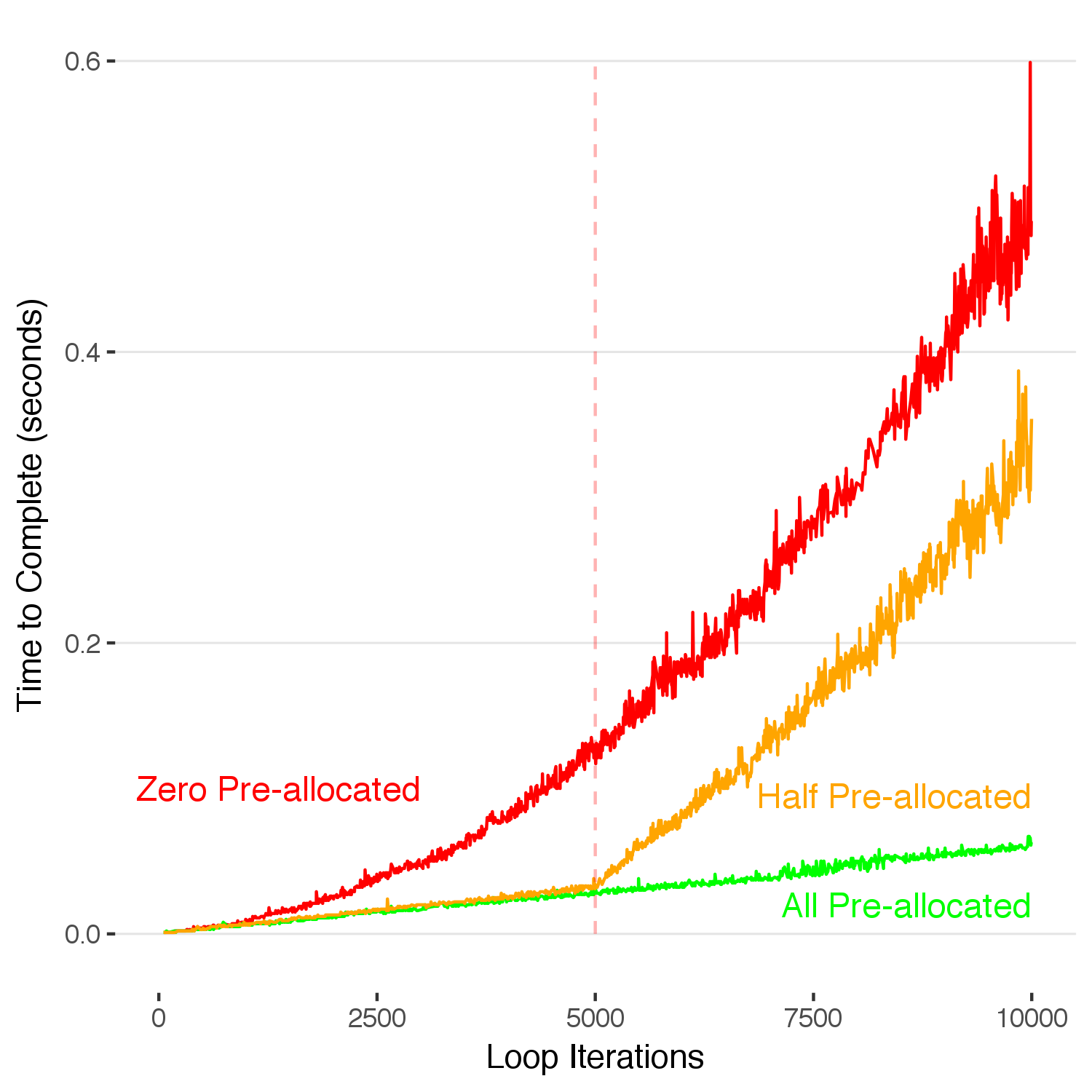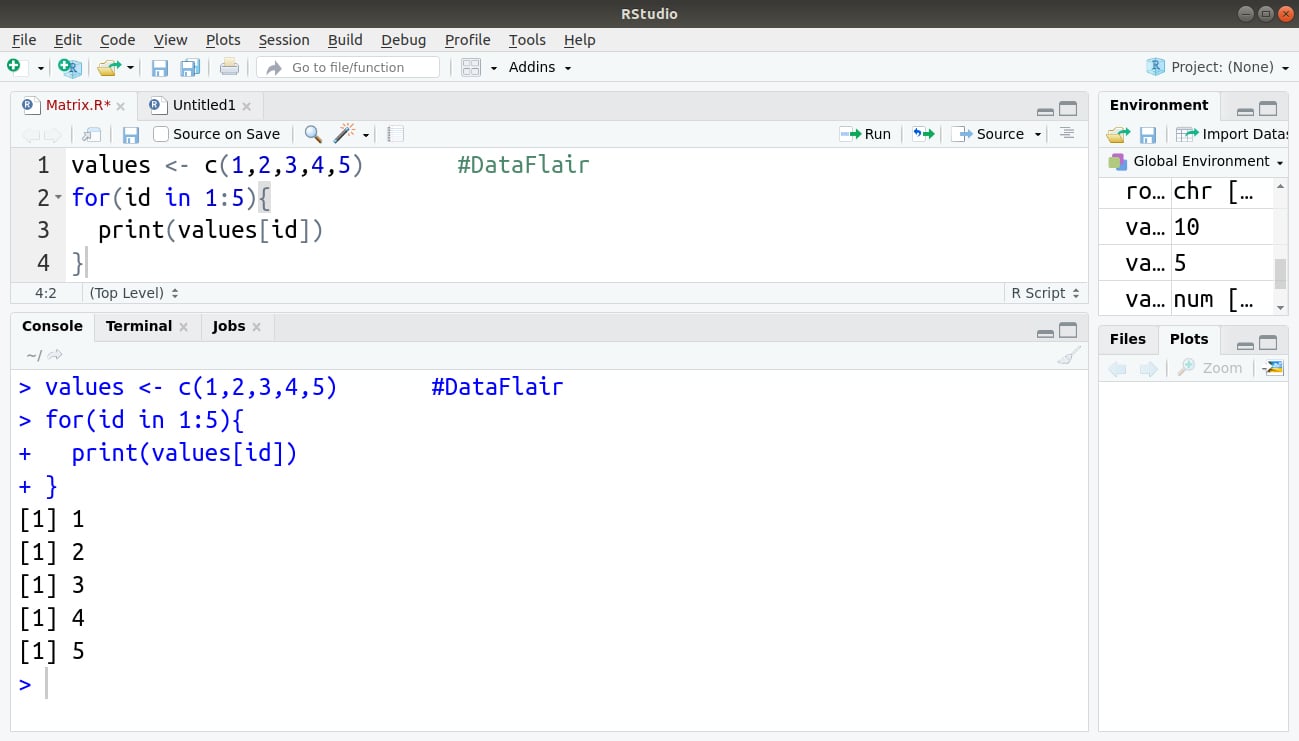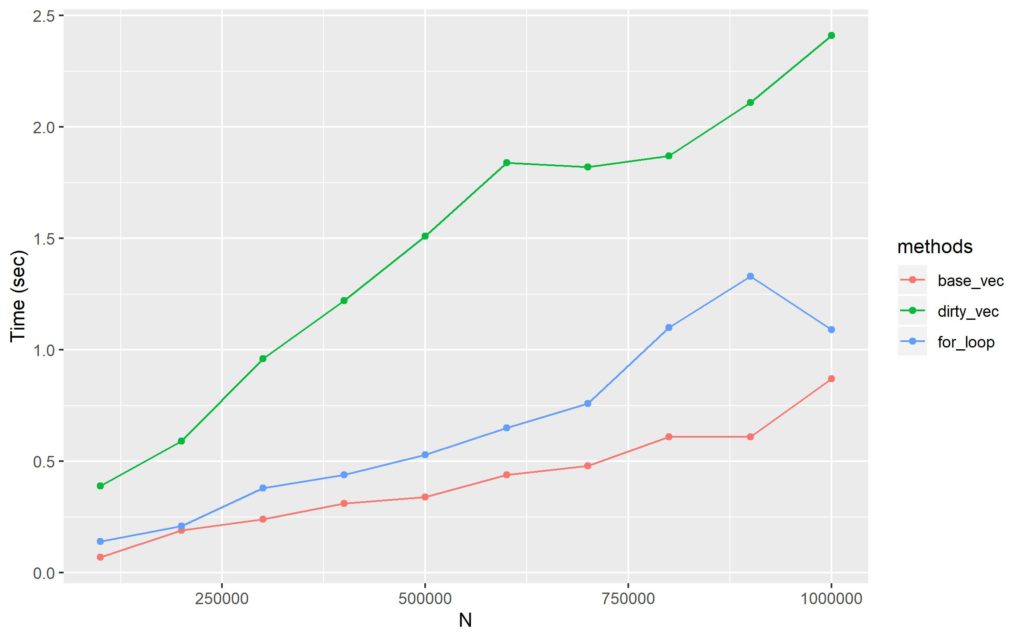

So this is not what I think you are aiming. To read data from a file or from the terminal without the need for quotes and. If our for loop began for x 1:2:15, we must state that x 1 initially, before our while loop begins. Notice that we need to initialize a loop variable (a while loop does not do. Notice that we need to initialize a loop variable (a while loop does not do this automatically).

R is recycling the vector sample_size as it is smaller than the vector p. 1, 2, and 3 digit prime numbers by first creating a vector of all the prime. Coercion is from lower to higher types from logical to integer to double to character. Since, a vector must have elements of the same type, this function will try and coerce elements to the same type, if they are different.
#HOW DO YOU CREATE AVECTOR WITHOUT A LOOP IN R HOW TO#
What your code is doing is dividing the first (p(1-p)) by the first sample_size value, the second (p(1-p)) by the second sample_size value, the third (p(1-p)) value by the third and the fourth (p(1-p)) again by the first sample_size value and so on. How to Create Vector in R Vectors are generally created using the c () function. Once removed, each individual process took 1-2 seconds)Īnyway, I don't think your apprach is valid, if you want to do the operation you wrote for each of the three values os sample_sizes, you have to explicit it in a loop or using an *pply function for it. Of course, the loop was propagated along the script, making it worst. When I went back to that code I found a messy loop doing nothing but repeating the same operation several thousands of times. For example, for n3, the answer would be. Here the time is not that important due to the small magnitude of the example, but it may be in other tasks (real example: I had some very old code with some routines that took ~30 min per individual, with ~200 individuals. I want to repeat each element n times to make a long length(x)n vector. I mean, writting a loop without using it is not good. It is doing three times because of the vector sample_size, as you said, but each time is doing the exact same operation.

What you would need is something like: p <- seq(0, 1, length = 100) It is just recycling the vector 'sample_sizes' as it is shorter than the vector 'p'. `ylim` argument to standardize the y-axis across all three plots. We can create a vector with a sequence of numbers by using if the sequence. You will often come across this assertion in the. Creating a numeric vector is the first step towards learning R programming and there are many ways to do that but if we want to generate a sequence of number then it is a bit different thing, not totally different. Standard mathematical functions for fast operations on entire arrays of data without having to write loops. The three samples sizes `N` in the vector `sample_sizes`. R Programming Server Side Programming Programming. I have created a more advanced tutorial on plotting data in for-loops.This tutorials also covers the ggplot2 package a very powerful package for graphics in R. This can also be useful when you want to create GIF-files. Note that we have specified to wait 1 sec after drawing a graph. Most of the basic operations will act on a whole vector and can be used to quickly perform a large number of calculations with a single command. The final plot created by the previous R code is shown in Figure 1. I still don't understand what do you want to do, but according to the comment # Write a for-loop that calculates the standard error `se` for every value of `p` for each of Once you have a vector (or a list of numbers) in memory most basic operations are available. Unless you want to slow the execution time xD Remember that control flow commands are the commands that enable a program to branch between alternatives, or to take decisions, so to speak. So, to answer your last question.There is no point of having a loop if the index is not used in the loop (in general). According to the R base manual, among the control flow commands, the loop constructs are for, while and repeat, with the additional clauses break and next. The only thing the loop is doing is slowing the execution time. But you achieve the same result without the loop. What is happening is that R is making the same routine: se <- sqrt(p * (1 - p) / sample_sizes)

Std::cout ::iterator it2 = std::find_if(vecOfNums.begin(), vecOfNums.You don't need the loop. Std::cout result = findInVector(vecOfNums, 45) Std::vector::iterator it = std::find(vecOfNums.begin(), vecOfNums.end(), 22) Not good to use I and j as variable names, and arrays used in inner loop, Lcr2 and Lcr3, are not cleared or. Std::vector vecOfNums = įind an element in vector using std::find In this article we will different ways to find an element in vector and get its index.


 0 kommentar(er)
0 kommentar(er)
